Great influencer review! “Influencer marketing is worth at least $1 billion, and it has grown up a lot this year, with more sophisticated data and tighter media contracts. Here are five things we learned about influencer marketing in 2017.”
Great influencer review! “Influencer marketing is worth at least $1 billion, and it has grown up a lot this year, with more sophisticated data and tighter media contracts. Here are five things we learned about influencer marketing in 2017.”
Top 5 Influencer Research Tools for Social Media Marketing
uma.bhat
Tue, 11/14/2017 – 09:47
Do you know that 61% of consumers skip ads and 48% install ad blockers!
Customers are more likely to buy when they get recommendations from a person they trust.
It is true that 49% of consumers seek guidance from social media influencers before making a buying decision.
Many marketers have realized that ads is not the best way to market their products. The rise of ad blocks is giving way for influencer marketing.
We all have seen celebrities like Justin Bieber promoting Calvin Klein underwear or Selena Gomez promoting Adidas Neo.
They are not the expert fashion designers or have any involvement in the products, yet their promotions have a mass appeal. This is celebrity marketing has been there ever since the evolution of marketing.
Influencer marketing is a latest trend that has emerged due to the growth on online marketing.
Influencer marketing is a way of promoting products with the help of influencers in the domain who are experts in the products that they promote.
For example, beauty bloggers like @MichellePhan promote beauty products and fashion bloggers like @AIMEESONG ?promotes a new fashion line. In this case, the promotions are trusted much higher by the consumers since they see promotions from the experts.
Influencer marketing can work wonders for your brand. Many marketers are replacing celebrities with YouTube, Instagram, and Snapchat influencers. These online stars are providing unfiltered feedback on products, and consumers love it.
Influencer inspire engagement with their audience by making it a two way communication. Influencer have built a fan following through social media and their reach usually focuses on a specific niche audience.
For example, an influential gamer would endorse gaming and tech products. People look up to these influencers for advice, tips, and recommendations in regards to consumer products.
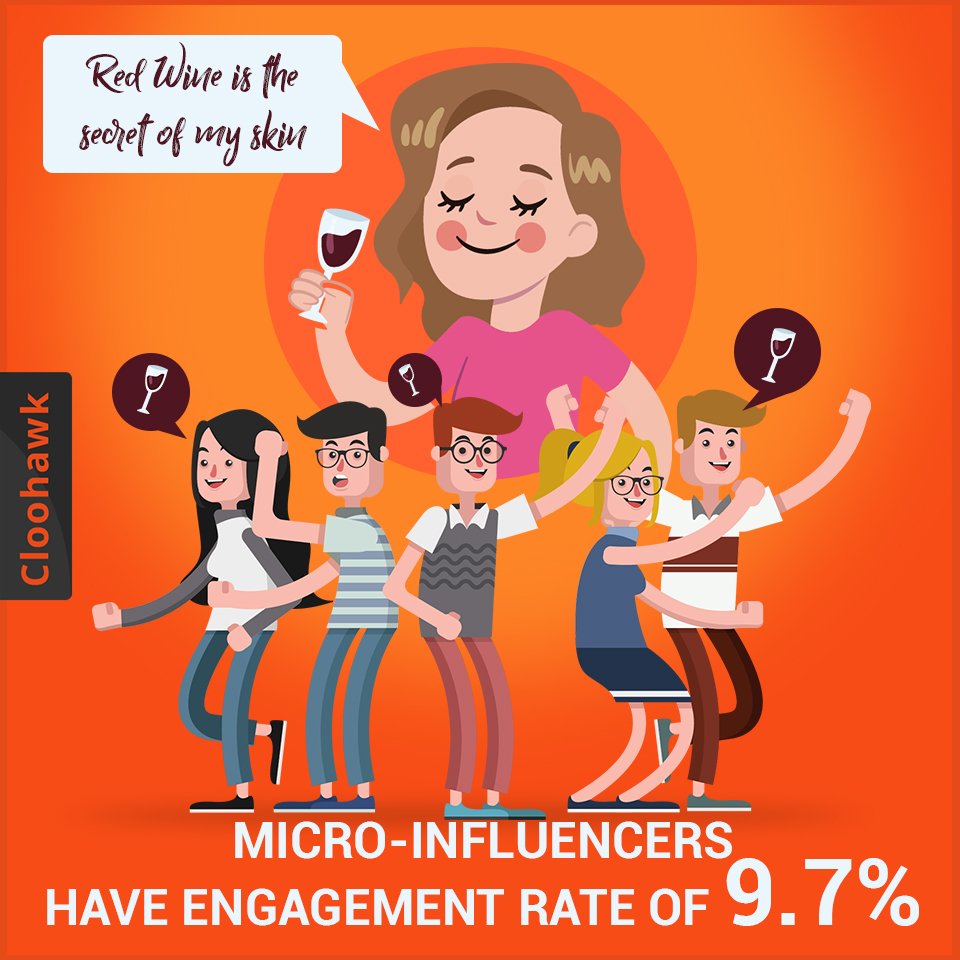
Now that you know the importance of influencers, it is time to find and research influencers in your domain so that you can engage with them for your product promotion activities.
But finding influencers can be a task by itself. This is the first step towards your influencer campaign and needs to be perfect. There are quite a few impressive tools that will help you in researching influencers in your niche.
Buzzsumo is one for the most popular tool to research influencers. Search Buzzsumo with a keyword relevant to your industry and it will throw up results of the top influencers in your niche.
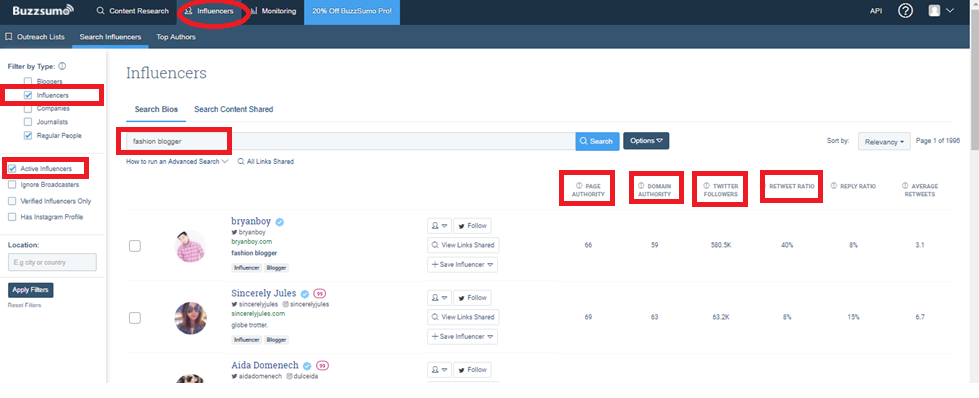
Buzzsumo shows the page authority and domain authority. It also provides useful insights into the number of twitter followers, their retweet ratio, reply ratio and average retweets.
These statistics help the marketer to know the reach and engagement of the influencers, based on which they can choose the right influencer for their promotion activities.
Hootsuite is a powerful tool that helps marketers to discover social media influencers by monitoring the conversations that relate to your industry. This tool helps you to get answers to some of your questions such as:
When you get the answer to these questions, you have got the set of people who can help to expand the reach for your brand.
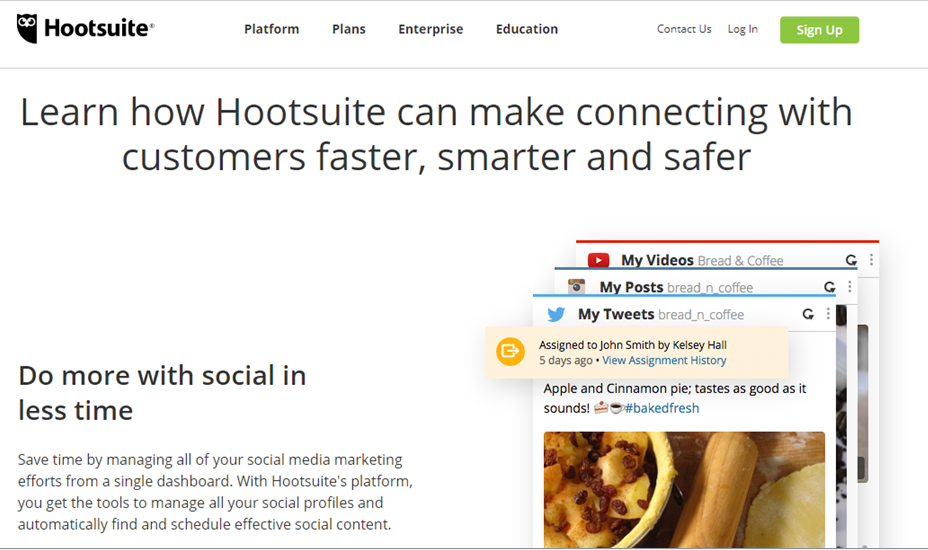
Traackr is a tool that offers solution for those markets who are interested in reaching out to influencers with an aim to build strong relationships. It is an efficient tool to manage your global influencer network.
Traackr helps to track conversations and also validates real influencers. It saves a lot of time of the marketers by identifying the right influencers as per the profiles that a marketer is looking for.
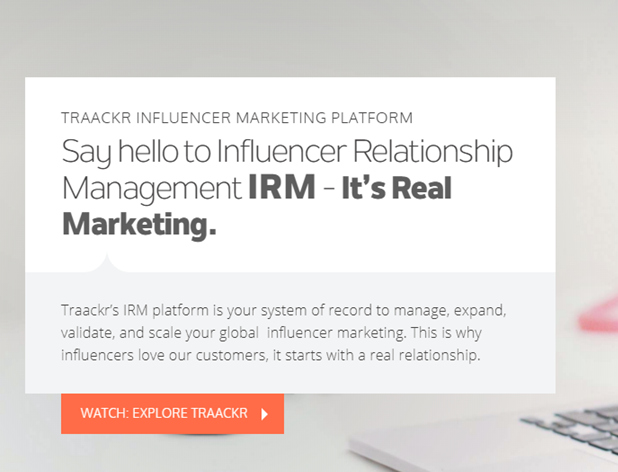
Traackr scores each influencer based on reach and relevance, which provides a clear starting point for the marketers. It offers features such as tracking conversations, import existing contacts and a lot filtering options.
BuzzStream is another useful influencer outreach tool to help manage your efforts of finding and managing influencers. BuzzStream is capable of automatically researching influencers. This tool can be used to discover the contact details and social profiles of influencers in your niche. It also helps to you track communications with influencers.
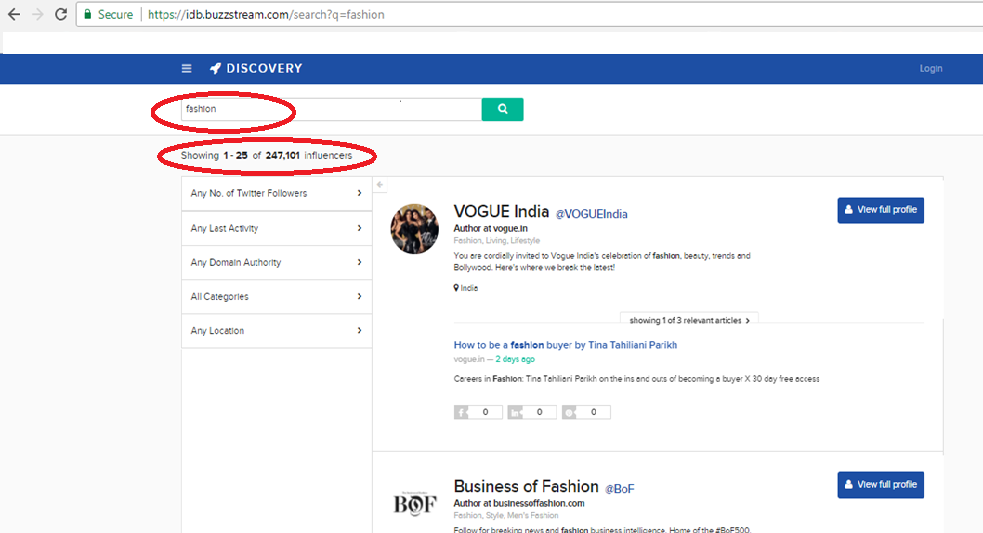
Once you have the list of URLs, BuzzStream will take over and complete the rest of your work. It will automatically search each website and identify contact information, social metrics and traffic statistics.
Pitchbox is yet another useful tool that helps you to find influencers in your niche. With Pitchbox you can focus on creating connections and discussing partnerships with the top influencers in your space. It is a wonderful tool to find contact information, website URL, social media profiles and much more.
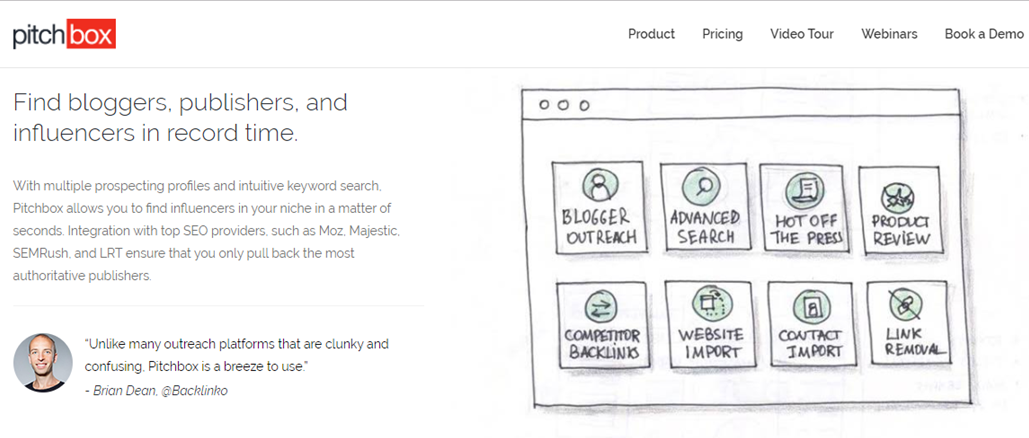
Pitchbox allows a marketer to set up emails which will reach out to opportunity contacts up to three times. When you receive a response from the contact, you can view and respond to it within Pitchbox’s interface, removing the need to use multiple programs or browser windows.
81% of people trust the advice they receive from influencers.
It’s time to leverage the power of influencers in your space. Influencer marketing drives sales to a great extent. With the right tools you can find influencers who really matter to your business.
Have you tried any of the tools to find more influencers? Would you add any other tools to this list? Please share your list in the comments section below.
On – 18 Oct, 2017 By Jeff Rojas
A quick Google Trends Search and you'll quickly see that the search for “Influencer Marketing” has skyrocketed over the last five years. Rightfully so, as Entrepreneur contributor Daniel Newman pointed out in 2015, and several studies have proved: Influencer marketing is the fastest growing and most cost-effective channel.
But for every success story, there's a dozen other nightmare stories of influencers who've mishandled their responsibilities and botched their marketing strategies along the way. Case in point, a celebrity influencer who neglectfully forgot to remove the copy from their post. If you’ve ever hired an influencer and didn’t see a return on your investment, don’t worry you’re not alone. In an ideal world, you’d hire a Michael Jordan or David Beckham for your company, and products would start flying off of the shelves.
The reality is that influencer marketing is significantly more complex than that. Even though you’re paying for access to a specific audience, that audience is still a consumer market that you need to use a strategic approach with — and adopt an entrepreneurial mindset.
While it should go without saying, you want to invest in someone who actually uses your product or service, or someone who could potentially benefit from using your product or service.
It’s not worth your time hiring someone who doesn’t have a vested interest in using your product. For instance, if you were a wetsuit company targeting surfers — you wouldn't try to engage with a surfer who is known for not wearing a wetsuit.
It is probably not the most efficient use of your time to employ a non-wetsuit wearer, unless you can come up with a compelling reason why your specific person is jumping out of their skin to start wearing your new wetsuit for a distinct and definite reason.
You want someone who wants to use your product and who is willing to provide you “real world feedback.” Think of it like a small focus group for research and development (e.g., this is what I LOVE about your product, but I think you can improve on it). This way, you know exactly what they’d tell their audience behind closed doors when you’re not around.
Just because a person has a large audience doesn’t mean they’re successfully reaching them. And just because an influencer has a large following doesn’t mean they have the attention of their audience. Worst yet, what if your influencer was one of those who bought their followers?
A large following doesn’t mean anything if that audience isn’t listening to you. Think about it this way: If you had a physical brick and mortar store, what’s more valuable for immediate sales?
While the first scenario may help reach a broader audience and start promoting brand awareness, it's not as likely to convert to sales if you're trying to cover overhead. Most, companies would rather take the qualified list of leads — and rightfully so.
In order to make the most of influencer marketing, you need to hold influencers up to the same level of accountability as any of your other marketing outlets. It doesn't benefit your business to invest in a lead list with no qualified leads.
The problem with traditional influencer marketing is that most companies don’t set themselves up for success to begin with. Simply put, they’re paying for something or someone they don’t even understand how to efficiently use.
The secret to making influencer marketing efficient is to first define what your goal is and exactly how and why that influencer can help you get there.
If your focus is brand awareness and you’re trying to build your Instagram following — great! Define a reasonable number of views and followers that you’re expecting per post. Define how many followers that you’d like to see by the end of the month. Define what tags to use to promote your content. Be explicit with details.
If you’re trying to sell products, then define how many sales you’d like to see per month or per quarter. There are quite a few fitness companies on Instagram who offer commission sales to their influencers as opposed to paying them per post. In order to keep anyone accountable, you need to define what your goal is so that you can track of their progress with specifics.
In addition to that, most influencer marketing is done with a “shake of the hand” deal, or a “nod of the head.” That type of mentality doesn’t lend itself well to accountability or success.
If you want to make the most of any influencer marketing, you need to focus on defining a specific outcome and then holding your influencers accountable just as you would your other employees. By defining target goals and defining expectations, you can set yourself up for success from the beginning.
For instance, a couple of my clients have hired me on a monthly retainer rather than hiring me on a project by project basis. Each contract has different stipulations, but my obligations range from speaking engagements to demonstrating products and mentioning new products on social media. The benefit for companies to work with me on a consistent basis is that I’m able to incorporate them seamlessly into the work I’m doing already.
For example, say that you’re a men’s sportswear brand and you’re looking to pay an influencer to wear your attire while they’re working out. Rather than doing a one off video or project, sponsor them and require that they wear your attire anytime they’re on camera.
Keeping that example, say your influencer gets picked up by a vitamin brand — now your influencer is wearing your attire while marketing the vitamin brand’s product.
By incorporating several brands that seamlessly integrate with one another into my daily outreach, the companies can then benefit from the marketing dollars my other clients spend. Think of it like a mutual fund and my brand is the bank.
Individually, each company may have a limited budget for outreach, but by pooling their resources into one brand (me), they’re able to reach a consumer market they may have not had access to. With those contracts, my clients and I sit down and write up a contract that defines specific dates, projects and expectations that they have — then I follow up monthly with a report and phone call.
Contractually, what you’ll want to do is make sure that your influencer doesn't include your competitors. This seems obvious to entrepreneurs, but not so much with influencers.
Just like any other employee, you have to keep your influencers accountable or you’re not going to see a return on your investment. I also find that the brands that have the most communication with me are usually the ones seeing the most benefit out of working with my brand.
Even if I’m putting my best foot forward, usually clients who are uninvolved don’t see the value I bring to table until it’s too late. Coordinating our efforts allows me to create the content that promotes their products in the most seamless way possible.
Source:
You can't go anywhere these days without hearing about the elusive, purportedly mystical powers of influencer marketing.
But is this buzzword-laden tactic actually worth your time and energy?
According to a recent study comprised of marketers from a variety of industries, 94% said influencer marketing was an effective campaign strategy. That's great news for marketers — right?
Not so fast. Even though a majority of marketers believe influencer marketing is a viable tactic, it's still incredibly challenging to report accurately on influencer campaign ROI. In fact, 78% of marketers said that determining the success of influencer marketing campaigns would be a top challenge this year.
So even though the tangible benefits of influencer marketing — follower engagement, driving traffic, and creating more authentic content — seem clear-cut, there's still a lot of progress to be made in making this form of campaign measurable for agencies and marketers.
Let's back up for a minute. What exactly is influencer marketing, and how does it differ from the traditional celebrity spokesperson advertising model?
Influencer marketing is designed to tap into an existing community of engaged followers. Influencers — or influential people — are specialists in their particular niches, and have established a high level of trust and two-way communication with their follower bases. As a result, these individuals have influence over an audience you might be trying to reach, and can be helpful marketing to those buyers.
There is some overlap between celebrity endorsements and influencer marketing campaigns, but fans of influencers trust that their endorsement of a product or brand comes from a well-researched, more holistic place, rather than something as simple as a signed contract. And while there is often a formal agreement in place between brands and influencers, influencers tend to be more selective about their affiliations, choosing to partner with brands that reflect their unique personal brands and won't alienate their followers.
Celebrity product endorsements are less about engagement and more about attaching a person's fame and name recognition to a particular brand. For brands, celebrity-driven campaigns are much more about grabbing the attention of a wide audience than tapping into a very specific niche.
To give you an idea of how brands — both big and small — are leveraging the power of influencers in their marketing efforts, we've put together a list of ten influencer-driven campaigns. Check them out below, and decide for yourself: Is influencer marketing worth the hype?
The affordable clothing chain tapped social media influencer Meghan Rienks to appear in a series of promotional posts on Instagram, Twitter, and YouTube. In the videos, Rienks shows fans how to style outfits for different occasions (e.g., a holiday party, and big date night) using pieces from Old Navy.
Rienks, known for her comedy sketches and lifestyle content, has a formidable following on social media, with over 1.3 million Instagram followers and 2 million subscribers on her YouTube channel.
This bottled smoothie brand is edging its way into the beauty, fashion, and health scene on Instagram with help from key influencers in the space. Lifestyle bloggers like Kate La Vie (below) share sponsored posts featuring snapshots of their daily outfits and beauty essentials — including a strategically placed Naked Juice in the mix.
This Manhattan-based beauty startup (which was recently named one of Fast Company's Most Innovative Companies of 2017) owes much of their seemingly overnight cult status to their ever-expanding network of super fans and micro-influencers.
Instead of paying a few big names to promote their minimal skincare and cosmetics, the brand relies on “regular women” to spread the word.
“What's very motivating to us is this idea of every single woman being an influencer,” Glossier CEO Emily Weiss told Quartz. Glossier recently introduced a referral program to enable its more influential followers to offer product discounts and other incentives to their unique networks.
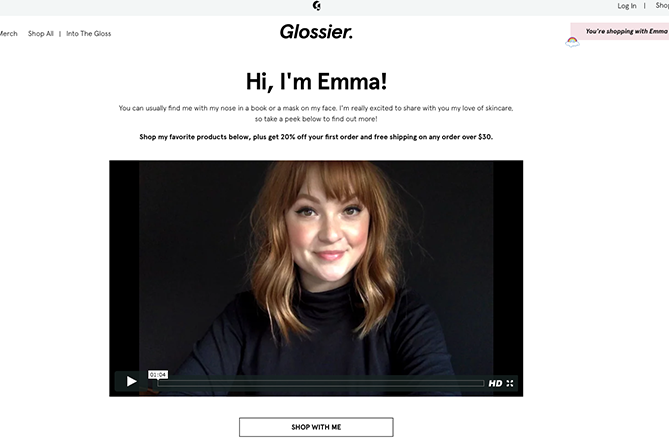
Towards the end of 2016, the boat shoe brand began working with over 100 micro-influencers on Instagram to create engaging content for its followers. Sperry identified fans of the brand on Instagram who were already sharing high-quality photos of its products, and started inviting these users to develop visual content for its official Instagram account.
Diageo, the parent company of Scottish whiskey brands Lagavulin and Oban, was awarded a Shorty Award for Best Influencer Marketing Campaign for this yule log video starring Parks and Recreation's Nick Offerman.
The 44-minute minute video shows Offerman sitting by a crackling fireplace, staring broodingly into the camera, and occasionally savoring a sip of his drink. Thanks to the simple seasonal premise and Offerman's unique brand, the video was a viral hit.
GAP's successful Styld.by campaign featured a number of influential social media personalities showing how they incorporate GAP clothing into their personal wardrobes. Users viewing the influencers' posts on social media were given options to “Shop this Look” conveniently in the caption of photos.
Thanks to the involvement of multiple influencers from different niches, GAP's campaign had enormous reach.
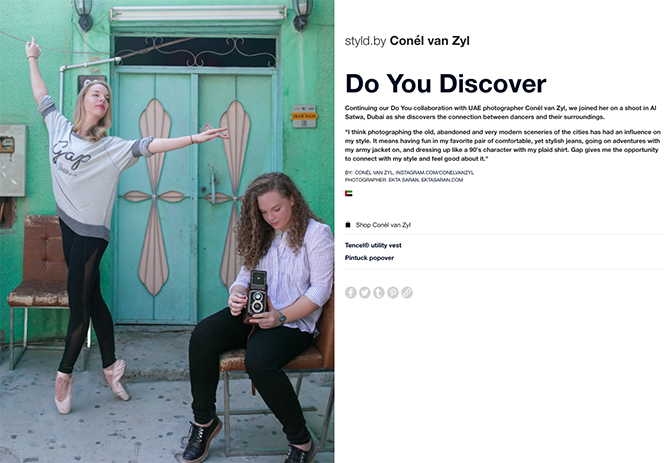
If anyone has figured out how to gain a loyal following on Snapchat, it's hip-hop artist and producer DJ Khaled. Once a minor figure in the music world, Khaled has enjoyed an unprecedented level of success on the ephemeral photo-sharing app, with each of his snaps garnering over 3 million views on average.
“DJ Khaled has completely cracked the platform,” said Emmanuel Seuge, senior vice president for content at Coca-Cola, one of Snapchat’s major advertisers. “He’s the king of Snapchat.”
His “King of Snapchat” status means Khaled is in high-demand for influencer campaigns with brands. He regularly takes part in “Snapchat takeovers,” where a brand hands over the reigns of their corporate Snapchat to Khaled for a brief period of largely unfiltered antics.
Working with W+K London, Stride Gum launched a Snapchat takeover campaign with Khaled last year to promote its “Mad Intense Gum” campaign. The brand called the takeover “an unpredictable, fun day for all his followers.”
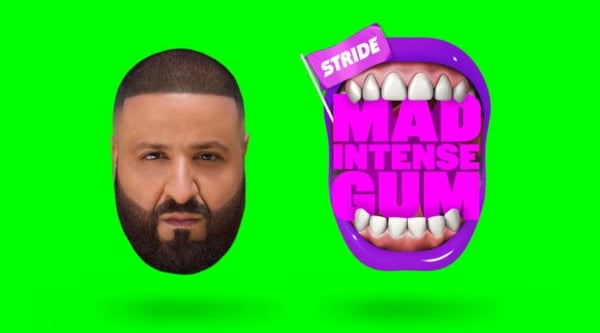
One promising way to work with influencers is to create a competition for them — one that invites them to create content on behalf of your brand for an opportunity to win something, like exclusive features on your social media channels or be named on a “best of” list, for example.
Skype executed influencer marketing in this way with its “Your City, Your Passion” competition. Influencers from every corner of the globe were invited to create content explaining why they're proud of their home cities, for a chance to win a one-on-one Skype session with a famed expert within their given field, including Epic Mealtime creator Darren Morenstein.
To promote its 2016 holiday collection of keepsake ornaments, Hallmark partnered with a number of family-friendly Instagram influencers to share personal, tender moments from their families' holiday season.
Using the hashtag #KeepsakeIt, the influencers offered their followers candid glimpses into their family holiday traditions, along with a link for users to purchase one of their own keepsake ornaments.
High-end accessory and footwear brand Loeffler Randall has become a favorite among artists, bloggers, and fashion insiders, thanks in big part to the company's commitment to involving social media influencers in its marketing campaigns.
The brand's “LR Ambassadors” include a diverse group of writers, painters, florists and other creative businesswomen “leading dynamic lives.” In the brand's own words, their LR Ambassadors are “cool girls doing cool things.”
In addition to profiling its LR Ambassadors on the company blog, Loeffler Randall shares pictures of its ambassadors wearing LR shoes and accessories on Instagram, using the hashtag #LRambassador.

The Key: Social Team Formation, Training, Coaching and Willingness to PLAY!
The Challenge: Help us fill our event in three weeks!
So many of you saw the previous Blog post on the Informs IMPAC 2017 show here in Chicago. Well, the INFORMS people came to us about three weeks before the show and said they needed a short, low-cost campaign to fill their event with paying event attendees at the Notre Dame Chicago Campus. We viewed this as the ultimate Social Influencer challenge: with a small budget and very little time, could we use our core network to make this event pop and possibly put some butts in seats? We took a close look at our network and talked briefly among our team; then we decided to take on the challenge and thought we would give it a shot with our Social Influencer Event System. Spoiler alert: it was a dramatic success! I have outlined the highlights of our steps below.
Strategy: Look at the impact and influence of the network
We faced the challenge of two networks coming together. FinTech Analytics and Sports Analytics are two different groups, with two entirely different networks. Keep in mind we look at every event like a sporting event, so we assemble networks and sub-networks like “Social Teams”, where there are levels of talent and groupings based on each levels’ commitment to the organization and desire for it to succeed, i.e., corporate championship. So, our typical method is to run what we call our “Inside Out” analysis. It might be easiest to follow along with the diagram below:
Prep work: We make sure first and foremost that we connect all of our teams and brands to the teams associated with the event. We also score all Team Players on the diagram above, both professionals and brands, so we know who the strongest players are – and consequently the ones most likely to participate. As much as you’d like for everyone to participate, we find we mostly get a 50% participation rate; however, some groups surprise us with a higher level of play.
Get the Teams Ready for Play
1. Core Team (Level One) – these were the Board Members. We were able to get agreement ahead of time for willingness to play. This is critical; without this buy-in, it does not work. So, a big shout out to the Board Members listed below who allowed us to start this machine rolling. A special shout out to Andrea Leiter who was our initial content and spark to get the troops assembled and have them agree to play with us.
They agreed to allow us to train them on how to play on social media and how to interact with our content. Our Social Jack™ Influencer Team Training purposely keeps it simple and easy for busy people to play the game with us and it’s proven to be highly effective. Board Members also agreed to connect us to the next level of the network, the Speaker Team.
2. Speaker Team (Level Two) – The Speakers were all connected to the Board Members (Team One), so we worked to have them reach out and ask the Speakers to play with our content. We then also provide weekly online coaching sessions for all clients and subscribers so they have a place to go. Don’t forget to also include the Speakers’ brands as part of the game! On our Social Jack™ Platform, we also record all training and coaching sessions for review. We then reach out to all Speakers and invite them to participate. When we have more time, we offer our training and coaching program for Speakers; unfortunately, for this run we could not organize our training for all Speakers.
3. Sponsor Team (Level Three) – Sponsors typically are invested; however, many do not know how to play socially. We had the Board Members with the best relationships personally contact the Sponsors and ask them to participate; some even sent email blasts in addition to social posting and engagement. Most are typically invested as they too want the eyeballs on their brand — or they would not be Sponsors. We watched and helped the Sponsors boost their message as part of the process. Reciprocity is part of the success recipe here!
4. Connected Influencer Team (Level Four) – This is our “secret sauce”: so, we find the Influencer Players in our network, depending on the type of event, audience, etc. Sometimes we have more and sometimes less. In this case we reached out to everyone — from media contacts related to sports and everyone we knew in FINTECH. We wound up with a team of about 35 people of which about 20 played nicely. There was a great variety of participation, ranging from emails to social media placement of banner ads to attendance. Too many to mention here, suffice it to say however that we could not have done it without these players in this process.
Time to Play
Once we have team connections and agreements in place, it’s really time to play! As soon as we had the board trained, we then mapped out our messaging with emails, social media and advertising. We had to move fast since we had a super short promotion window, with very little time for testing. We had to lead out with our best guestimates for the message and tweak on the fly as needed.
We created content calendars and sent those out to all the team players that were trained and those that had agreed to play with us online. As always, some jumped in right away and some needed a little nudge and still others did not show up. No-shows are a hard fact, but in this case, most showed up to play with us online and some even went the extra mile with sending extra emails and even posted their own supply of social media. The most important thing is for all team members to understand what and when you will be posting so they can interact with you, so the best bet is to have your content done in advance, let speakers and sponsors know when they will be featured and where, and then communicate like crazy on approach.
Ongoing Coaching Support
In our weekly Social Jack™ coaching sessions, we provide unlimited support for all clients and students. This means if they want to understand LinkedIn more, we teach that; if they want to play more on Twitter, we teach that. Whatever they need we are there to help them. This way they never feel alone in the game, and for many this is a new game for them. We understand that many of these people are new to this game and we want them to succeed just by being part of the event.
That Extra Reach
To continue this thought, think about if you have a speaker that only has 50 followers on Twitter, then you show them how to get another 20, then how to attach to their brand and other influencers in their world. You are now changing the game one person, one network at a time. We literally received many inquiries and orders just from this method alone.
In this case we had:
8 Board Members
7 Sponsors
13 Speakers
20 Connected Influencers
The total estimated “targeted” social reach ended up being over 75 million connections, and that is a very conservative estimate.
The Outcome: 85 attendees for a paid event within 20 days!
One More Thing
Always think of the “one more thing”: what is one more tweet, post, share or like that can be done and where. We went into LinkedIn Groups, Alumni Groups and other areas, and in the home stretch that also helped. So, remember when doing this, stick to the plan and — like you do at the gym — always go for one more thing!
There were many more things that we did behind the scenes as part of our process, but I hope this brings you ideas and thoughts of how you can bring more people to your events through Influencer Marketing. We are all Influencers and have a powerful network once it is activated, it’s just that some of us are new and just starting out. Remember that the largest Influencers started with just a few followers at some point and built up to what you now know. The cool thing is that it is never too late to start.
For many of you this seems way out there, it is new, it is growing, it is changing all the time. If you want to know more or want to get a walk-through of our system, I encourage you to visit our website or our Coaching and Training Platform.
Oh — one more thing, remember as you start your journey, you are never alone as long as you follow the Social Teaming methodology described earlier in this blog post. Please let us know how you do as you grow your brand and yourself as an influencer, we would love to feature you or maybe refer to you during one of our upcoming events. After all, our event clients are always looking for the next up-and-coming influencer!
We will see you online…. Influencing!
With all the hype of the newest features on LinkedIn — video, active status and other cool new features – that were released in the last few weeks, an old popular feature, one that was taken away with the last major release, now returns!
At the Social Jack™ Academy, we had a cool feature called “Network Diving;” this is the simple process of searching your connections’ networks. Well, this feature is now back, and better than ever because now it incorporates the new filtered search system.
We’ll illustrate how it works with an example: let’s say you are going to have a meeting with one of your connections and are going for named referrals, and you would like to have the option to filter ideal connections. With the previous release you would get a list, with no way to search like you used to. Fortunately, now this has changed back to the way it was, where when you click on someone’s connections, it now jumps you to the filtered search like it used to! This is an amazing switch. We caution here that there are a few exceptions, so read on.
The main exceptions here are the following:
1. If the connection you are “Network Diving” on, i.e. exploring their connections, has their network access turned off, you will not be able to dive unless you have Sales Navigator.
2. Those of you on Basic (Free) LinkedIn will be able to enjoy only a few selections in the search, then you will be blocked from seeing the rest unless you have Premium LinkedIn. But in my mind, this feature alone is the worth the price!
We are showing this account version chart provided from our friends at Integrated Alliances, thanks Mike O’Neil!
We hope you love this new feature and if you want to learn more of what we call “Power Moves”, please connect with us at our Social Jack™ website. If you are reading this before September 5th, then jump into our next Social Selling class at: https://socialjack.com/linkedin-complete-social-selling-course/ – this is our complete course with On Demand classes, Instructor-Led Coaching Sessions. You will learn more cool fun things like in this article.
Please let us know how this ‘old new’ feature works for you.
We will see you online Network Diving!
Sorry if it sounds like I am geeking out here, but read on!
Most of you know we handle a ton of conferences and provide Influencer Marketing services. When asked by INFORMS to participate in their conference, it reactivated my technical network, meaning that connections from my roots were brought forward. I have been in the financial arena since the early 80’s and I’ve been in or around analytics for most of my career; I’ve been a huge fan of sports all my life. So when I looked at the INFORMS conference and saw this network coming together I was tremendously excited.
Those of you that know me, you know I am all about the network. When you look at the speakers and topics it’s almost hard for me to pick a track. So we are splitting up and coming together on the LinkedIn Group afterwards to compare notes! Then you have the companies connected to the speakers, STATS – the best live sports data provider I know, can’t wait to meet Patrick Lucey, Ph. D., Director of Data Sciences. I will have a follow up interview blog after the conference. Liz Wanless, Ph. D., from Ball State University will talk about something near and dear to my heart, which is Customer Relationships and Sales Optimization, she will be sharing two revenue enhancement case studies. Russell Walker, Ph. D., from Northwestern will be talking Big Data related to Sports Management; this is changing our world and delivery of stats as we speak. Zach Binkley, Ph. D., Lewis University will be sharing sports performance communication, implementation and innovation; with all the data today, this is a massive undertaking.
From my FINTECH world I can’t wait to hear what Michael Rechenthin, Ph. D, from tastytrade has to say about Data Sciences and Collaboration, this is right in my wheelhouse of content. We also know that Machine Learning and Predictive models are hot and that topic will be covered by Justin Dickerson, Ph.D. – he will dig into Default, Fraud and Scoring which is a big piece of our financial world today. Joe DeCosmo, Chief Analytics Officer from Enova, will address Real Time Analytics. We are in such a “real time, on demand” world, and he will share what is trending and what the future holds.
Take a look the chart below, all speakers have a critical handle on what is hot and going on right now, so that is why it is tough to select a track!
The only negative? The conference only has 100 seats at the current venue! However, you can get on a waiting list for the next conference and early notification for the next conference.
Registration and Waiting List link: http://connect.informs.org/chicago/meetings/impac2017
If you cannot make this conference please ask me what questions you want answered at the bottom of this post and I will do my best to get them addressed here or in the LinkedIn Groups
Also, check the new INFORMS Chicago Twitter account
To follow activity and update use Hashtag: #IMPAC2017
Social Jack and Forward Progress are proud to participate in this great event, we look forward to seeing you at the event or on the related social channels on the journey!
So you have been asked to be a guest on a podcast…Great! In the spirit of Influencer Marketing, we hope it receives plenty of traction and social reach. In our previous blog, How to be a Social Influencer, we spoke of being a “Thought Leader” and turning on the “Content Machine”. Fortunately for you, podcasting is a great way to do just that. People get to hear your voice, know your personality, gain insights and knowledge from you, and even better, you can attach the podcast to blogs like this and to social media. In fact, my previous blog references a podcast I was on — speaking about this very topic. Once you follow the steps I describe below, your podcast will also support your efforts in Personal Branding, described in another one of our blogs, Personal Branding – A Great Start to your Social Selling Journey!
With so many of you getting interviewed, we thought we should tell you what to do before, during and after the podcast. For Social Jack™, we have a promotion process for each and every production, whether it be a podcast or webcast, so the best thing to do is understand some critical information about the podcast you are working with. Examples include what is their promotion cycle, what is their timing, etc. We reference this in the following list of steps.
7 Steps to promote your podcast interview
1. Promote on social media and other outlets 2 weeks before, if the podcast producers have a show schedule that references you. There is typically a website they have for the blog that will mention upcoming shows. You should sync the timing of this “xx” with any posting of your show. If they don’t have one, you can choose to promote a couple of weeks before, no further out than that. Once you’ve done this, you can tag and link back to that show, discussing how you are looking forward to the podcast.
2. Notify your Team! Remember Social Teaming, it is the essence of teamwork: you’re not doing this this all alone! Tell them you are on this podcast, ask them to watch for social media, ask them to listen and provide feedback and get in the game with you! It’s collaborative, and it’s fun. You will also pick up more podcasts and speaking gigs this way too, it’s proven.
3. Ahead of schedule, plan to blog about it, then you can have a link to the show from the blog post. This will provide good traffic between your site and theirs (and remember to use ample keywords). Also consider shooting a video talking about the upcoming podcast, or plan one for the release date of the podcast.
4. Promote the podcast on social media the day of the show recording; some podcast producers promote as well, but others do not because it locks them into a production release schedule.
5. Once the podcast is published, it’s time for you to go gonzo, tag your show and host, also remember all your channels. Once published, go ahead and cut lose with the blog or update the blog if done ahead of time.
6. 30 and 90 days after: (if relevant to your current business you can thank them and repost) – don’t forget use of #hashtags and @tags!
7. Forever after…. Keep using the podcast in your content cycle as long as it is relevant!
Now, go do the next podcast interview and keep following this protocol to put yourself out there to support your influencerness (yes, I made up this word just for you!) ?
PRO TIP: Remember to always listen to your blog interview and think about what you could have done better or said better to improve your position as a thought leader. Also, listen to your competitors and colleague’s podcasts as well. You should always be looking for those nuggets to be better.
TOP RESOURCE: We recently did a full course on podcasting with top Podcaster Scott Kitun, from Technori, one of the top-rated media podcasts featured on WGN Radio, here in Chicago. Below is access to the slides; if you would like access to the full class we did, simply go to Social Jack™ and join for a 90-day free trial and you will have access to this class and over 200 others for that period — and weekly coaching, too. This is our gift to you for being part of our community.
To learn more about Podcasting, check out Podcasting 101 Marketing on SlideShare
In closing, let us know when your podcast airs and the team at Social Jack™ will gladly listen and promote your efforts. Remember, we are on your Social Team and we are all in this together!
See you online!
So, @Social Media Today had a great article titled 12 Reasons why Your Business Should be Utilizing Employee Advocacy, with a great Infographic from @LinkedIn. This was fantastic for me — and timely – because I had some talks lined up on Employee Advocacy and Social Teaming. I’d like to highlight the numbers I think are the most relevant here.
On Average, a company’s employees have 10X as many connections as the company has followers. 10 Times? Yes — and this is proven. In many of our Social Selling and Social Culture programs, we know for a fact that the average employee has 240 connections, and with their two degrees of connections, their social reach hits about 3.8 million connections. Now, to be sure, they won’t reach all those connections, and they’ll need a level of frequency to establish success, however their potential of reach to the company is far greater. The company page needs to rely on followers and there are only two ways to get followers: from existing followers (like employees) engaging, or from advertising. On average, the employee page has only 3% of the potential reach of the employees, and that is best case from our experience.
Every two employee shares from the company page on @LinkedIn result in a company page view, every six shares results in a Company Page follower! Wow, that is staggering, that is all it takes? Well, almost. We need the participation of those employees. How does that happen, how is that orchestrated?
Let me give you a real-life example from one of our clients, American Family Insurance. While at a recent conference, I was able to listen to long-time associate @TomBuchheim, who led the charge at American Family for their Employee Advocacy Program. I have always known they were on it, and proud to say I have been there since the early days of social, and frankly their approach was brilliant. In fact, it was very synergistic to our Social Teaming methodology for sales and culture development.
He mentioned how they formed teams of champions that would act as advocates for the brand and be willing to share content provided by the company to their LinkedIn pages. They started with a small group, then they continued to grow the teams. They created rewards and recognition for their efforts and it bonded the team and humanized the brand. They are even now tracking the success of this program to new business. They had so much success that it became the “in thing”, to a point where people are lining up to be on the next selection. “Pick me!” is how ! Imagine that.
So you see, these are simple metrics which prove the value of employee advocacy. Tom’s story at American Family Insurance is evidence and it continues to grow. We are excited because all of our programs at @Social Jack, Sales, Career, Recruiting and Culture have Social Teaming at the core. In fact here is our definition below, see how it resonates to the story above.
Social Team Definition
A group of professionals who have complimentary skills (1) driving to a common objective, goal or destination for which they (2) hold themselves mutually accountable for collective performance. They stay constant on their journey with the (3) purpose of building stronger relationships, trust and always think of other team members with genuine reciprocity. A Social Team (4) utilizes online social networks and the power of their targeted connections, within their sphere of influence, to (5) enhance the team’s relationships, reach, performance and success in reaching their common destination.
If you would like to read more, check out our blog post on Social Teaming:
Social Teaming – It's All About Who You Know.
Here is a snapshot and link to the revolutionary infographic by LinkedIn
So whether you are in the middle of this and working to figure it out, ask us about Social Teaming to energize this effort. If you’re not sure if management will approve it, show these numbers and this great infographic by LinkedIn to your boss. Think of it as “it is time or get left behind”, because it’s just too easy and it promotes culture development at the same time. What are you waiting for?
We hope to see you and your employees online and working together for a stronger brand!
Notice I titled this ‘Social Influencer’, not ‘Social Media Influencer’. In our Social Influencer Marketing programs, we believe that it is our job to have our clients become Influencers in their world, and Social Media is one vehicle for making that happen. Let’s see if you agree or disagree with me after this article…!
First, a definition: an influencer is, simply put, someone who carries influence over others. An influencer on social media wields influence through social media. You probably know that word-of-mouth is one of the valuable forms of marketing; in our digital age, word of mouth goes way beyond what friends and family recommend to you, and that’s where influencers come in. No matter who you are, if you’re a thought leader in your network, people think of you and come to you first.
Becoming a thought leader in your network is a process, and our standard plan for our clients has about 20 steps, but here, I want to give you the top five things that could give you a head start down this path, something to think about and gain some traction. Even if you do nothing more than this, you will be further ahead than when you started.
Even if you’re not aiming to be a solution provider, becoming a social influencer can help you advance your career; we actually teach this as part of our career advance program in universities. On a corporate level, showcasing a company’s culture on social media can build the company’s reputation. Even more, employees can become corporate advocates – you can empower staff members to share their own insights about their work on their own social media feeds!
To be an influencer people need to really be able to easily digest what you can and will do for them — how you will serve them and solve their problems. You are most likely a solution provider of some sort. If you can clearly address a need that your target audience has, and match the skills you have to what you can provide, then you’re well on your way. Make sure your solution speaks directly to their need so that you are addressing the lowest common denominator of the problem at hand.
Example:
Say you’re an accountant. There are thousands of accountants, what makes you different, what is your niche in this very crowded world? I have a friend who over the years has forged his reputation in property tax savings. He completed his law degree and represents his clients from both an accounting and legal perspective. While he has enough knowledge to do your taxes and many other services, he decided over 20 years ago to pick a specialty and maintain that position. He is now one of the most recognized property tax attorneys in Chicago and has a limitless flow of referrals. We are now looking at how to add the social media component to take him to the next level. You might be this same position. Once you know your focus, you’re ready to move to the next step.
While you may not think there is any, there is always competition. How to find them? Simply Google search either by need or solution discussed previously, then look for blogs, webcasts, podcasts, and other sources of information. This will give you a perspective on how to either refine your message or, if nothing else, what to do better or what not do. This will only make you better. You can also set up Google Alerts with those words of ‘need’ or ‘solution’ as mentioned earlier, names of competitors, even your own name(s).
To setup a Google Alert you will need a gmail account and be logged into google, then simply go to: https://www.google.com/alerts , add as many words or phrases as mentioned above, define the frequency, and you’ll be alerted when this news hits the Internet.
Once you do find competitors or colleagues, make sure you subscribe to them and block out regular time to review the information you glean. This will only make you better.
You will never master all channels, so you need to really think of where your ideal target spends the most of their time, and decide what you can manage. We manage channels for many clients who want to be influencers and don’t have the time to make that happen, so you can consider that as well – hire and pay for assistance or find a volunteer help to build and manage. You can also reference our slide deck listed below.
Remember when doing this: one tip is to simply ask your clients where they spend their time on social media. This will give you a great start to making that choice.
Please reference one of my last blog posts on Personal Branding, this is the critical next step. Google yourself and see how your digital footprint represents your position in the market place. Most likely, social media sites like LinkedIn, videos and personal websites with your name will be at the top. You’ll want to make sure the first two pages identify that ‘solution’ niche you selected in step one. Be sure to update all your profiles and remove or rename any content that is not relevant. Your past will catch you up here, so be sure to search, scan and clean it up! Mark your calendars at the first of the month as a reminder to yourself to do this on a regular basis; we create more social profiles by accident than we know!
Okay, don’t get overwhelmed here, but you’ll need to schedule and start posting relevant content about your niche, your focus. This can consist of videos, blog posts, podcasts, interviews, slide decks (like we have done above), photos, articles you write or are featured in, and anything else that can live on the internet. Remember, when you are posting any content, tie it back to your social media sites and websites, and always make sure you include client’s need and the solution you provide. One of the simplest tips here is that you can add videos, slides or articles to your LinkedIn profile. If you author something, make sure to claim it, add it to your profiles, websites, and then post about it on your social media channels. And if you do work with a partner like us, make sure you communicate to your partners and trusted allies that you are posting and want their support to jump into the conversion online with you.
You are all influencers; sometimes, as we develop and migrate, we get lost in the shuffle of our business or lives, and we need to regroup, focus, reclaim our position, and tell the world. The great news is that Social Media allows us to do this faster and more efficiently than ever before. There are also millions of other people trying the same thing. The important thought to remember is to not get overwhelmed, start with these simple steps, and if you need help, ask those around you for support. If you would like to have a conversion with us, just email me and let’s set something up, you might be closer than you think.
To hear more on this subject, you can listen to a recent podcast where I was interviewed on Influencer Marketing: “Turn Attendees Into Super Fans Using Influencer Marketing with Dean DeLisle”
Social Jack™ is also a proud sponsor of the Virtual Event: Best Practices in Influencer Marketing, which will be taking place on Tuesday, August 1st, 2017.
Can’t wait to see you looking good as a social influencer online soon! – Dean